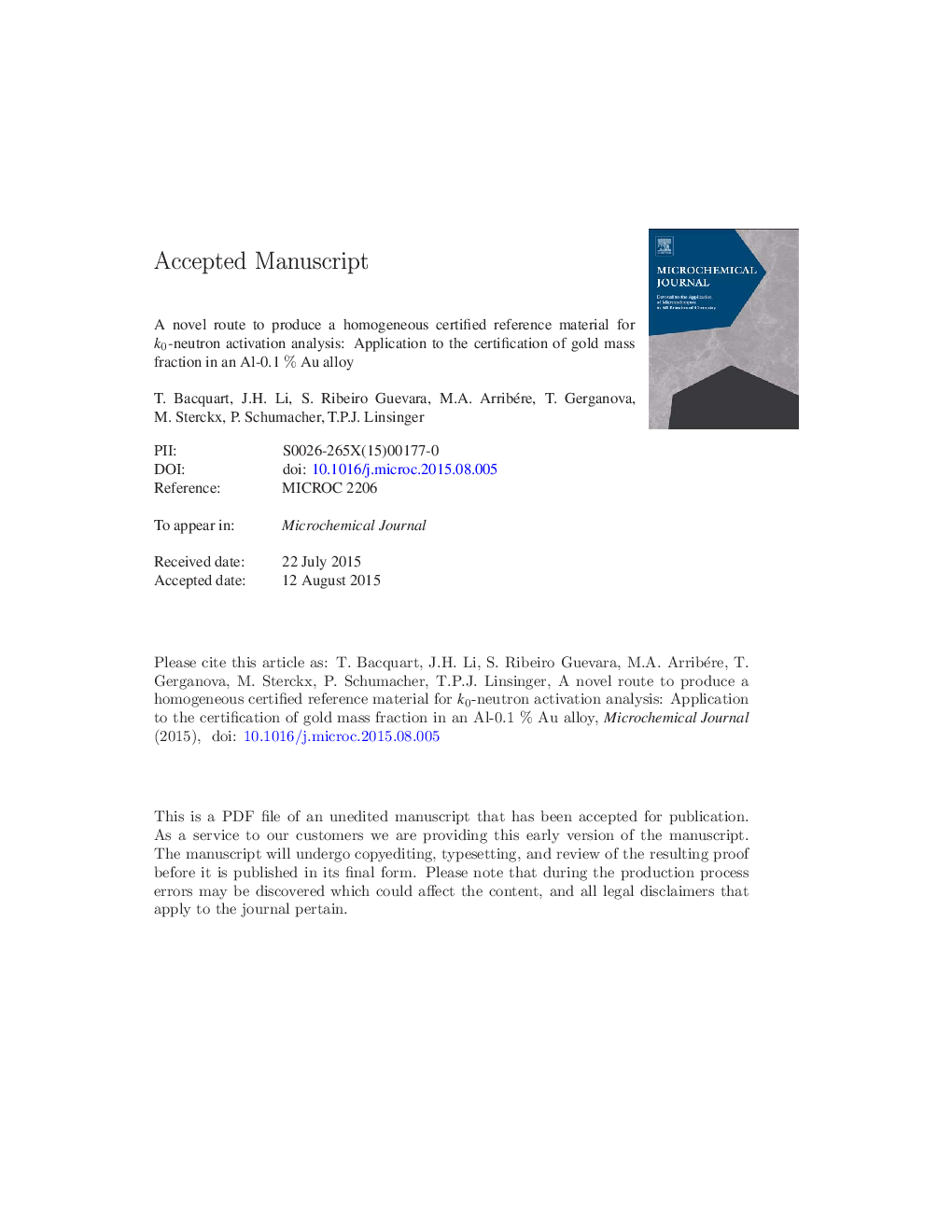| Article ID | Journal | Published Year | Pages | File Type |
|---|---|---|---|---|
| 7642051 | Microchemical Journal | 2016 | 28 Pages |
Abstract
Reliable certified reference materials (CRM) are required for neutron dosimetry in k0-neutron activation analysis (k0-NAA). In the past, levitation melting was employed to produce highly homogeneous alloys used in the production of CRMs. This publication describes a novel and more efficient way of processing such alloys using the example of an Al-Au alloy, the evaluation of the efficacy with respect to achieving homogeneity and avoiding micro- and macrosegregation and the final certification of the Au mass fraction. First, Al-5% Au alloy was melted by arc melting and then diluted into Al-0.1% Au with high purity Al in a resistance furnace under the protection of high purity argon gas. The as-casted Al-0.1% Au was then heat-treated at about 635 °C for 48 h. No significant macrosegregation and no intermetallic phase (AuAl2) were observed in the heat-treated alloy. Using this approach, a new CRM for gold mass fraction in Al-0.1% Au was produced in the form of wires and foils (ERM-EB530A, B and C). The relative uncertainty from gold inhomogeneity in the material was assessed using a randomised block design and inductively coupled plasma optical emission spectrometry (ICP-OES) and was found to be 0.3%. The characterisation of the gold mass fraction was performed by an interlaboratory comparison of expert laboratories. Sixteen laboratories participated using instrumental neutron activation analysis (197Au(n,γ)198Au), fire assay and ICP-OES. Alternative INAA reactions (197Au(n,2n)196Au) and calibration strategies were tested but not retained for the characterisation study as they did not meet the strict performance criteria set for the study. After evaluation of homogeneity and characterisation, the Au mass fraction in ERM-EB530A, B and C was certified to be 1005 ± 7 mg/kg (k = 2), which is a lower uncertainty than for previous similar materials. This demonstrates the suitability of the new production route, which should also be applicable to other binary alloys required for neutron dosimetry.
Keywords
Related Topics
Physical Sciences and Engineering
Chemistry
Analytical Chemistry
Authors
T. Bacquart, J.H. Li, S. Ribeiro Guevara, M.A. Arribére, T. Gerganova, M. Sterckx, P. Schumacher, T.P.J. Linsinger,
